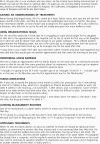Understanding patients' experiences of treatment burden in chronic heart failure using normalization process theory
- PMID: 21555751
- PMCID: PMC3090432
- DOI: 10.1370/afm.1249
Understanding patients' experiences of treatment burden in chronic heart failure using normalization process theory
Abstract
Purpose: Our goal was to assess the burden associated with treatment among patients living with chronic heart failure and to determine whether Normalization Process Theory (NPT) is a useful framework to help describe the components of treatment burden in these patients.
Methods: We performed a secondary analysis of qualitative interview data, using framework analysis, informed by NPT, to determine the components of patient "work." Participants were 47 patients with chronic heart failure managed in primary care in the United Kingdom who had participated in an earlier qualitative study about living with this condition. We identified and examined data that fell outside of the coding frame to determine if important concepts or ideas were being missed by using the chosen theoretical framework.
Results: We were able to identify and describe components of treatment burden as distinct from illness burden using the framework. Treatment burden in chronic heart failure includes the work of developing an understanding of treatments, interacting with others to organize care, attending appointments, taking medications, enacting lifestyle measures, and appraising treatments. Factors that patients reported as increasing treatment burden included too many medications and appointments, barriers to accessing services, fragmented and poorly organized care, lack of continuity, and inadequate communication between health professionals. Patient "work" that fell outside of the coding frame was exclusively emotional or spiritual in nature.
Conclusions: We identified core components of treatment burden as reported by patients with chronic heart failure. The findings suggest that NPT is a theoretical framework that facilitates understanding of experiences of health care work at the individual, as well as the organizational, level. Although further exploration and patient endorsement are necessary, our findings lay the foundation for a new target for treatment and quality improvement efforts toward patient-centered care.
Figures
References
-
- Granger BB, Sandelowski M, Tahshjain H, Swedberg K, Ekman I. A qualitative descriptive study of the work of adherence to a chronic heart failure regimen: patient and physician perspectives. J Cardiovasc Nurs. 2009;24(4):308–315. - PubMed
-
- Schocken DD, Arrieta MI, Leaverton PE, Ross EA. Prevalence and mortality rate of congestive heart failure in the United States. J Am Coll Cardiol. 1992;20(2):301–306. - PubMed
-
- Welstand J, Carson A, Rutherford P. Living with heart failure: an integrative review. Int J Nurs Stud. 2009;46(10):1374–1385. - PubMed
Publication types
MeSH terms
Substances
Grants and funding
LinkOut - more resources
Full Text Sources
Medical


